From beaches to jungles, ancient Mayan ruins to a vibrant cultural heritage, the tiny Central American country of Belize is an ideal destination for every type of traveler. Whether you’re chasing adventure or relaxation, this guide spotlights where to go in Belize for every vacation style.
And with a total footprint under 9,000 square miles, you don’t have to choose just one region. Transportation is easy to navigate, and you can comfortably see both beaches and jungles on a 7-day trip.
Jump to:
- Where to Go in Belize for Beaches: Ambergris Caye or Placencia (tie)
- Where to Go in Belize for Snorkeling: Ambergris Caye
- Where to Go in Belize for Scuba Diving: San Pedro
- Where to Go in Belize for Jungles: Cayo District
- Where to Go in Belize for Mayan Ruins: Cayo District
- Where to Go in Belize for Hiking: Stann Creek District
- Where to Go in Belize for Cultural Heritage: Hopkins
- Where to Go in Belize for Animal Viewing: Stann Creek District
Where to Go in Belize for Beaches: Ambergris Caye or Placencia (tie)
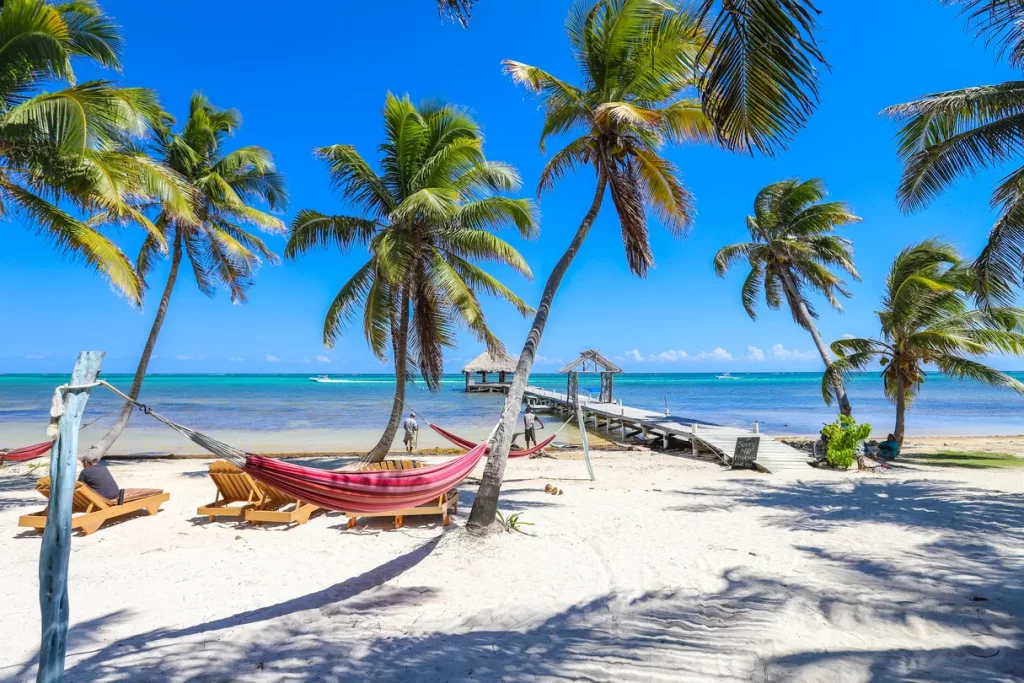
With an excess of sparkling turquoise waters and white sand beaches, it’s hard to narrow down where to go in Belize. However, most agree that the two best beach destinations are either Ambergris Caye (in the north) or Placencia (towards the south).
Ambergris Caye, an island just offshore from Belize City, is the country’s most popular destination. If you want a more active beach vacation, with proximity to some of Belize’s best snorkeling and scuba diving, we recommend heading here.
Ambergris is accessible by water taxi from Belize City, or a connecting puddle-jumper flight from Philip S. W. Goldson International Airport. The water taxi takes approximately 1 hour, while the flight is 10-15 minutes.
You can read more at our guide on the best things to do on Ambergris Caye.
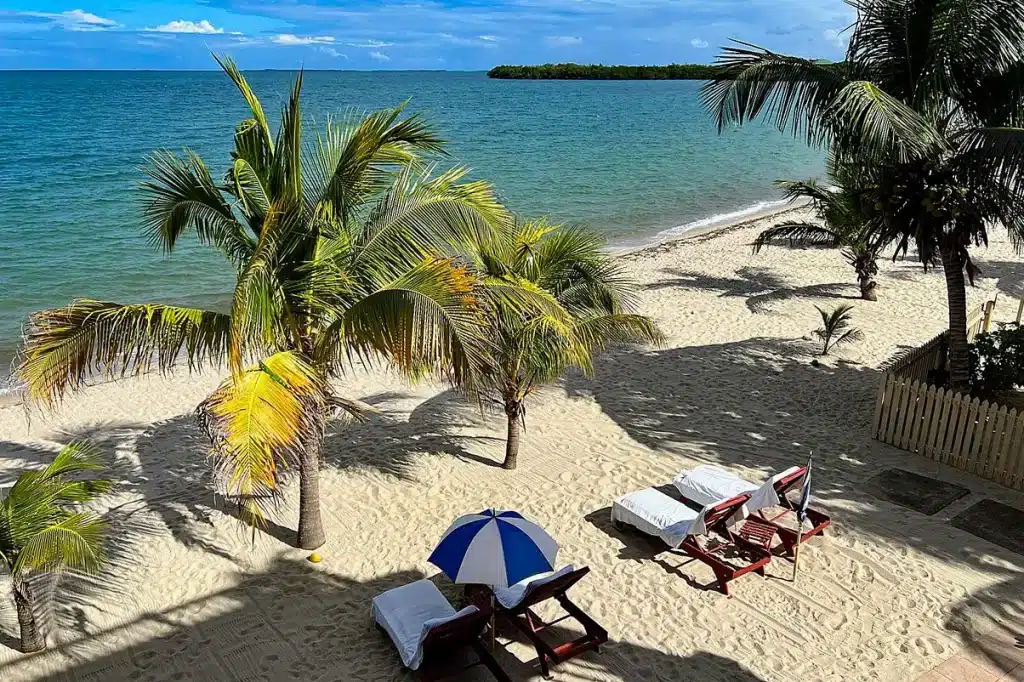
Conversely, if you prefer not to leave the mainland and simply want to relax, the more southerly Placencia is a good bet.
The Placencia peninsula is populated with some of the nicest resorts and eco-lodges along the coast (although there’s something for every budget).
It’s ideal for a more languid, refined beach getaway. And when you need a break from the lounge chair, you’ll still find colorful coral reefs just offshore, waiting to be snorkled.
Where to Go in Belize for Snorkeling: Ambergris Caye
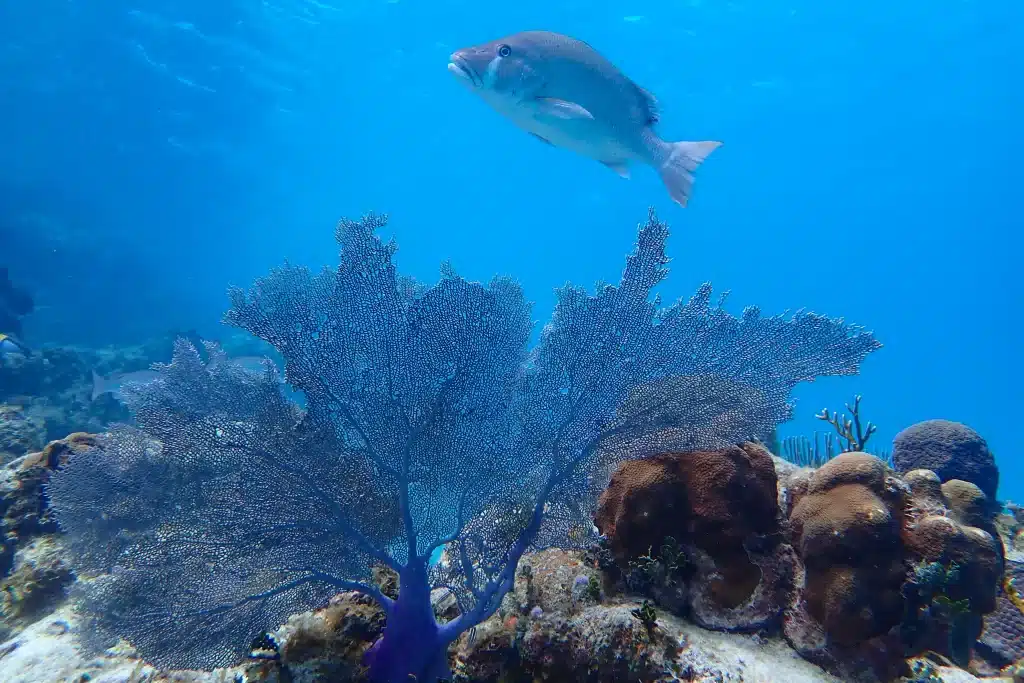
Ambergris Caye sits in the backyard of the Belize Barrier Reef, the second largest in the world after Australia’s Great Barrier Reef.
This dazzling natural marvel is designated a UNESCO World Heritage site, and is home to a rainbow of tropical fish, coral, sea turtles, rays, reef sharks, eels, and more.
Besides dedicated snorkel tours, you can also access the reef directly, within a few hundred yards of shore. Many hotels offer kayaks and paddleboards to help you get out to the reef, before you drop anchor and drop in.
Where to Go in Belize for Scuba Diving: San Pedro
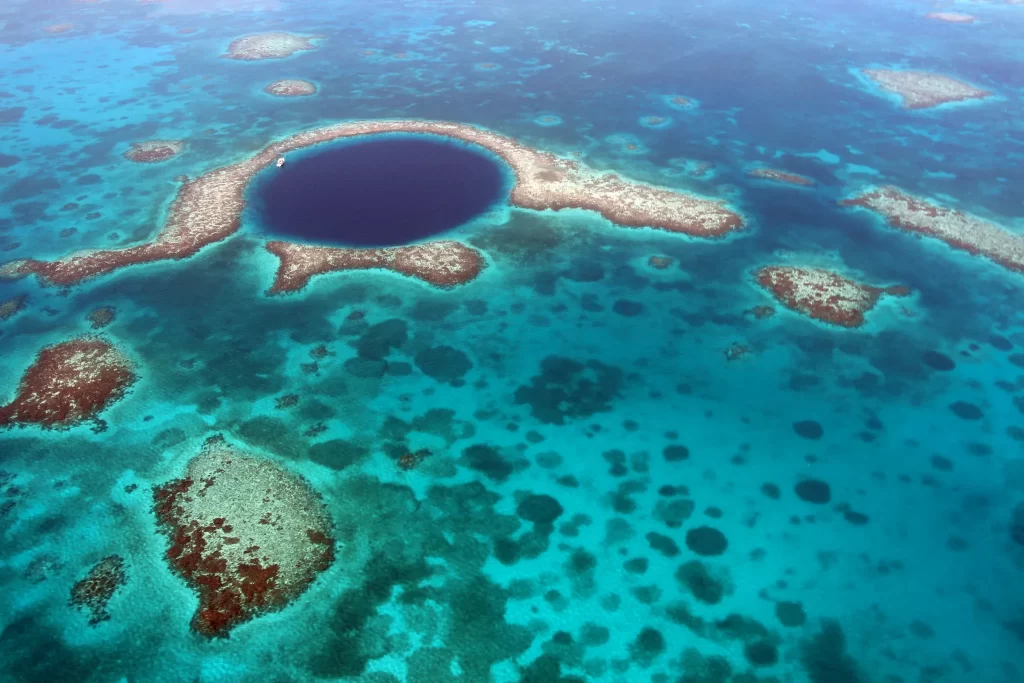
Scuba aficionados should consider basing out of San Pedro, the largest town on Ambergris Caye. The bustling center may not be as peaceful as Belize’s more languid beach destinations, but many of the top scuba outfitters are based here. Divers of all interests and abilities will find something here, from two-hour shallow, pleasure dives to full-day deep-water outings.
The nationally-protected Hol Chan Marine Reserve sits just offshore, and teems with vibrant aquatic life among its coral reefs. Dives are often under 50 feet, and will still get you back before lunch.
Alternatively, more serious divers can book a full-day trip out to the Great Blue Hole, a UNESCO World Heritage Site that is considered a “bucket list dive” by many (Jacques Cousteau famously said it was within his top five).
The Hole is approximately 50 miles offshore from Ambergris Caye, and requires an early departure and late return.
You can research dive operators on sites like Viator. We personally used Amigos del Mar, one of the highest-rated operators, and had a great experience. They offer everything from two-dive morning trips within Hol Chan Reserve, to full-day excursions to the Great Blue Hole.
Where to Go in Belize for Jungles: Cayo District
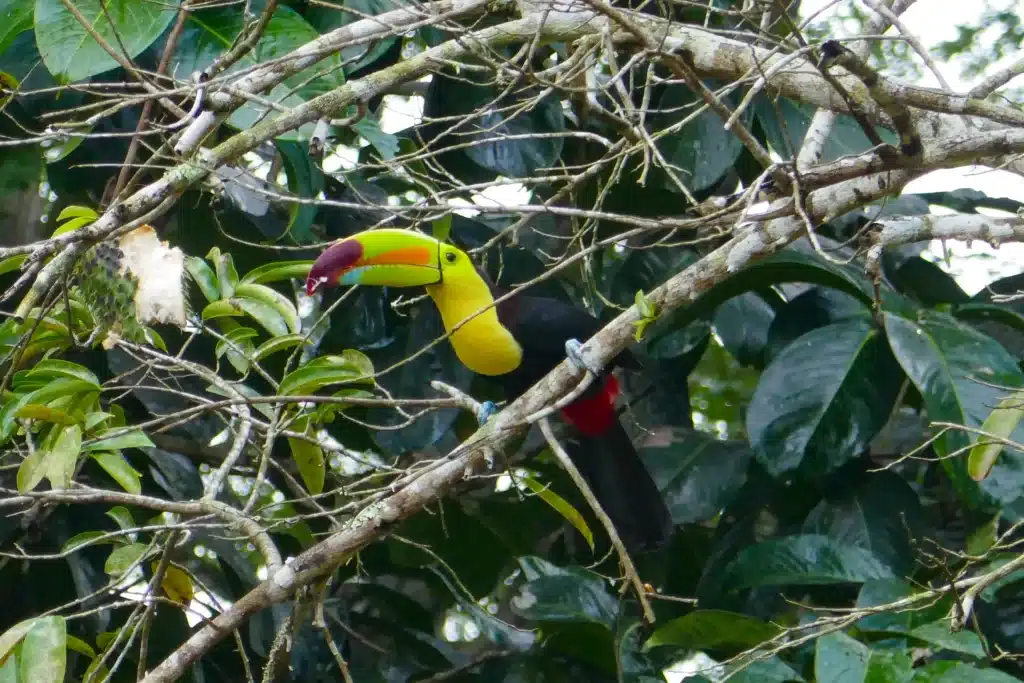
As you move inland, Belize’s topography transforms into lush jungle that is alive with monkeys, birds, and more.
While most of the country’s interior is layered in dense tropical forest, the best destination for jungle tourism is the Cayo District.
Cayo’s list of activities to choose from is extensive. Families can enjoy gentle nature walks, bird-watching, and river tubing, while adventure-seekers will find zip-lining, horseback riding, and even cave spelunking.
San Ignacio is the largest town in the region, but we recommend staying outside the city center at an eco lodge, for the full jungle experience.
Eco lodges immerse you in the natural surroundings, and you’ll wake to a cacophony of morning birds and the otherworldly calls of howler monkeys.
Some of the Cayo District’s more well-known lodges include Black Rock Lodge, Table Rock Jungle Lodge, Blancaneaux Lodge, and Sweet Songs Jungle Lodge, where we stayed. The lodges will also help you organize tours and outings, to maximize your time in the Belizean jungle.
Where to Go in Belize for Mayan Ruins: Cayo District
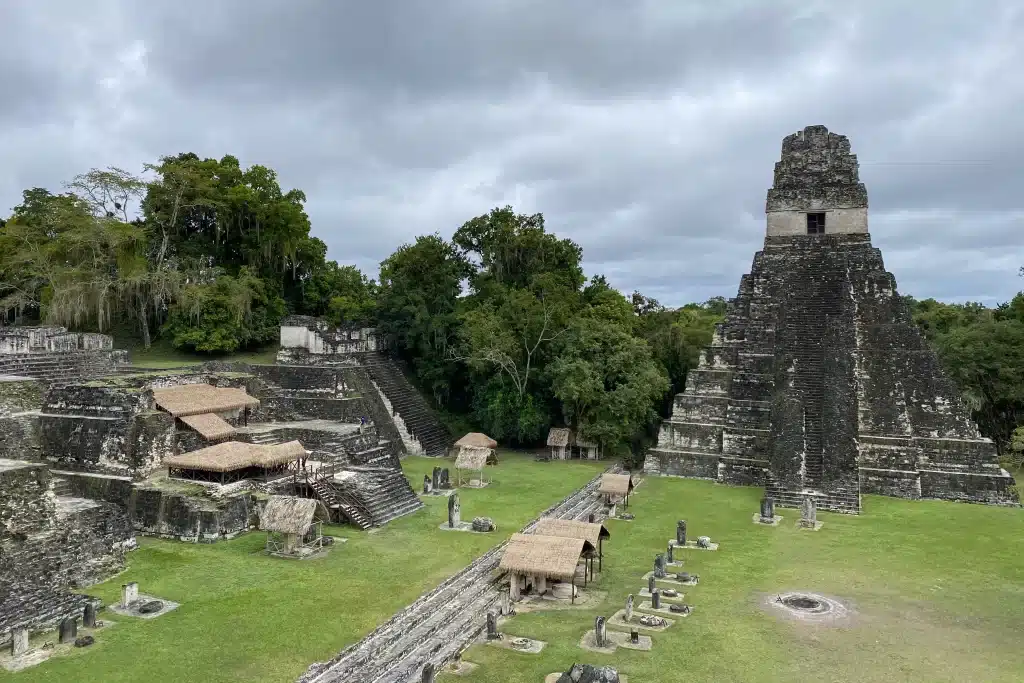
Basing yourself in the western Cayo District puts you in proximity to Belize’s highest concentration of Mayan ruins. The two most extensive (and famous) sites, Caracol and Tikal, are each within about a 2-hour drive.
Caracol is due south, while Tikal is across the border in Guatemala. You can learn more about the visitor experience of each site at our Tikal vs. Caracol comparison guide.
Additionally, Actun Tunichil Muknal has a smaller footprint but was equally sacred to the ancient Maya. Site of ancient human sacrifices, the victims’ full skeletons remain on display within the “ATM cave” (as it’s known). Those adventurous enough to explore this spooky site will also spy pottery and other artifacts left behind.
Mayan Touring Tip: Whether you're touring Caracol, Tikal, the ATM cave, or others, there are plenty of local operators providing door-to-door service. They will pick you up at your hotel, lead a private tour of the ruins, and return you to your lodging afterwards. With Tikal, guides will even handle all logistics of the Guatemalan border crossing. We used MayaWalk for our Tikal tour, and had a first-rate experience.
Where to Go in Belize for Hiking: Stann Creek District
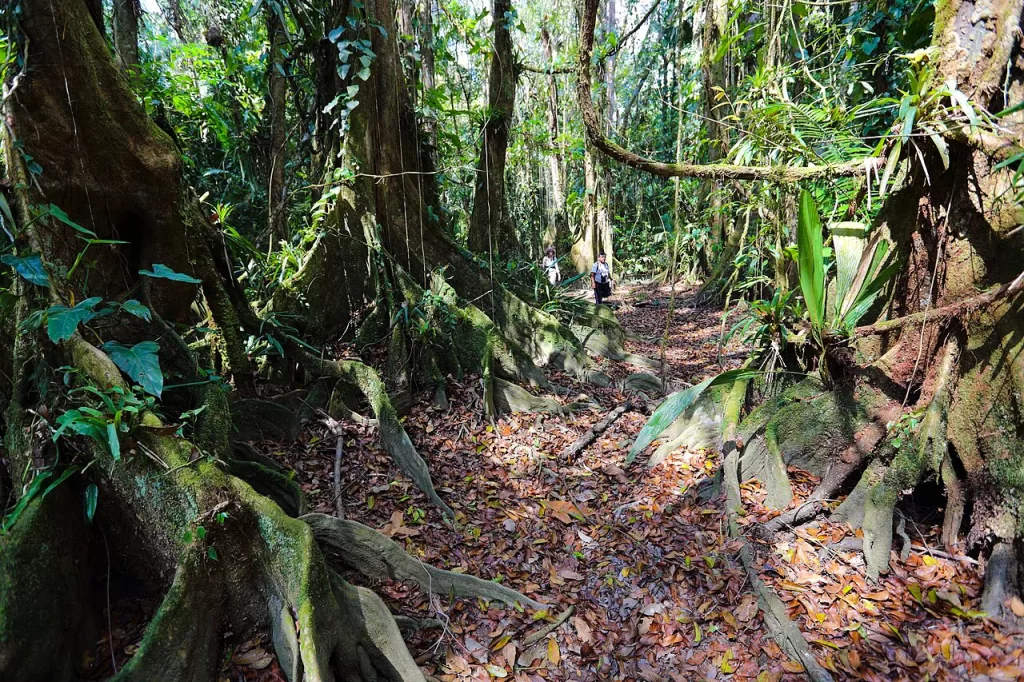
With lush jungle blanketing much of Belize’s interior, you’ll find nature trails nearly anywhere you go. However, the most iconic parklands are found in the country’s Stann Creek District, which includes Hopkins and Placencia.
Cockscomb Basin Wildlife Sanctuary is renowned for its animal life, but it also has some of Belize’s most breathtaking mountain scenery. Ben’s Bluff offers lovely views for only 2.5 miles roundtrip, with a small waterfall to cool off when the jungle gets too steamy.
Meanwhile, avid hikers may want to consider Cockscomb’s Victoria Peak, a 34-mile multi-day hike to Belize’s second-tallest mountain. Just note: you’ll need a licensed guide to accompany you on this trail.
Nearby, Mayflower Bocawina National Park’s Antelope Falls often ranks as one of the best hikes in the country.
Under 2.5 miles roundtrip, efforts for the (intermittently) steep trail are rewarded with sparkling jungle pools near the towering waterfall. Don’t forget to bring a swimsuit!
Runner Up: Cayo District
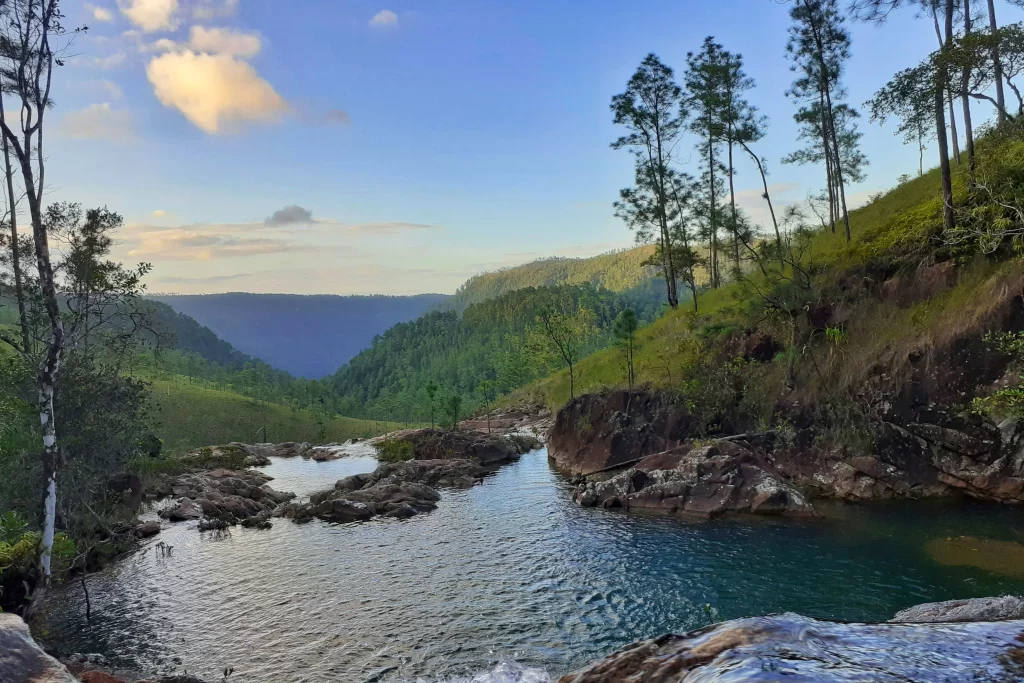
We caveat that if you’re already visiting the Cayo District, you don’t need to also transit down to Stann Creek. You’ll still find plenty of remarkable jungle hikes to satisfy here, too.
The Mountain Pine Ridge Forest Reserve boasts a series of trails winding among the only pine forest in Belize. You can catch Thousand Foot Falls, the tallest waterfall in Central America. Meanwhile, the 2.7-mile Black Rock Summit Lodge loop gets you to a bird’s eye panorama of the surrounding hilltops.
Big Rock Falls is another good option in the area, at just under 4 miles roundtrip. The jungle trek leads to an expansive natural pool beneath the falls, so bring a swimsuit. The trailhead is on Blancaneaux Resort’s property, but you can simply ask for access permission at the front desk.
Where to Go in Belize for Cultural Heritage: Hopkins
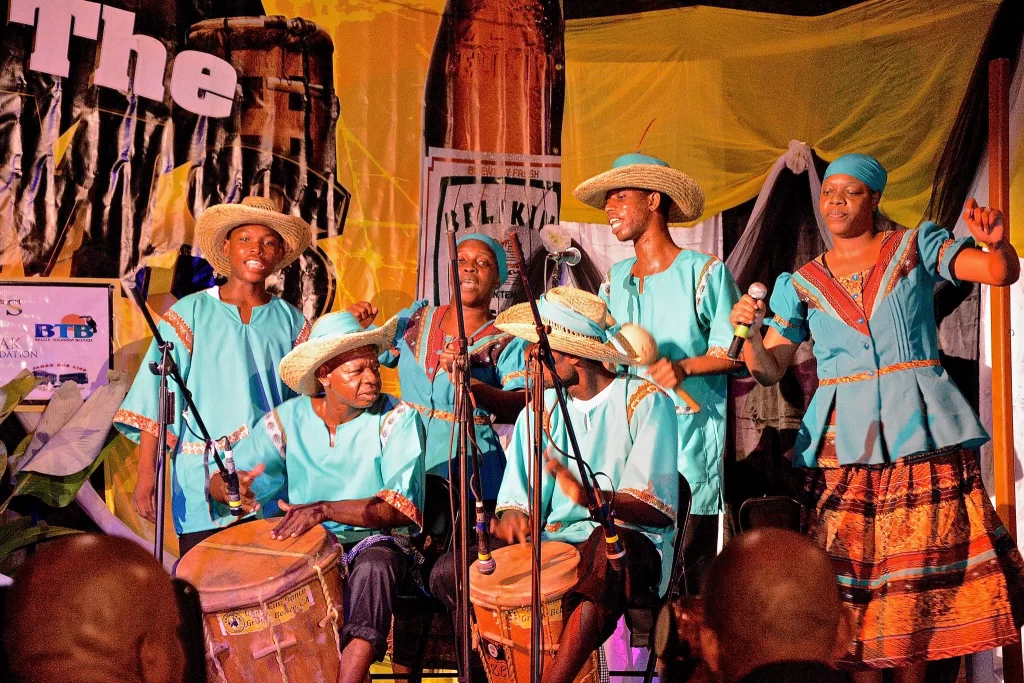
Hopkins, a small village along the central coast, is the cultural hub of Belize’s Garifuna population. Descendants of mixed Afro-Caribbean and Indigenous ancestry, the Garifuna remain one of the region’s most vibrant and prideful cultures, and a living testament to Belize’s rich history.
In Hopkins, consider joining a Garifuna cooking class, preparing traditional meals from locally-sourced ingredients, or explore the lively music scene.
Additionally, if you visit during July, you may get to join the revelry of the town’s namesake holiday, Hopkins Day.
For further exploration beyond Hopkins, head to the Garifuna town of Dangriga (just 30 minutes away) or savor the slow life of the many small fishing villages dotting the Placencia Peninsula.
Where to Go in Belize for Animal Viewing: Stann Creek District
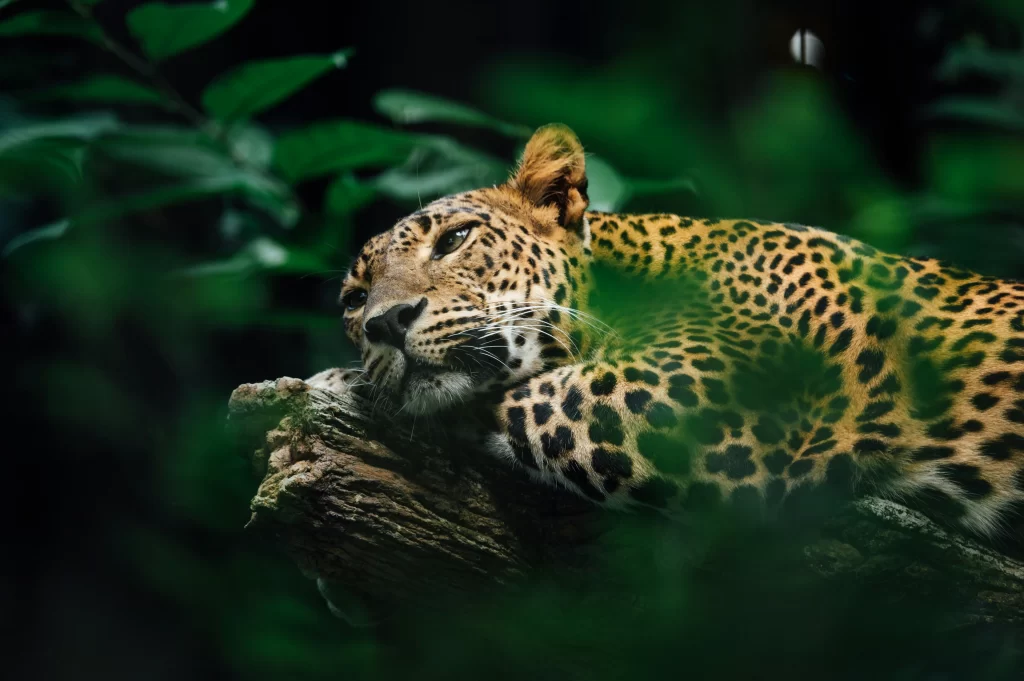
For the best animal viewing in Belize, the greater Stann Creek District (including Hopkins and Placencia) is a good home base. Besides the colorful marine life just offshore, you’re also within driving distance of the country’s top sanctuaries and parks.
A 30-minute drive from Hopkins is Cockscomb Basin Wildlife Sanctuary, Belize’s most famous animal refuge and the world’s first jaguar preserve. It boasts incredible biodiversity and natural beauty, along with an array of furry, feathered, and scaly creatures.
However, we caution that jaguar sightings are rare. These famously-elusive animals are mainly nocturnal, and notoriously difficult to spot.
Still, even if the jaguar probability is low, you’ll inevitably still see a multitude of monkeys, tapirs, kinkajous, coatimundis, sloths, and an extraordinarily high diversity of bird species.
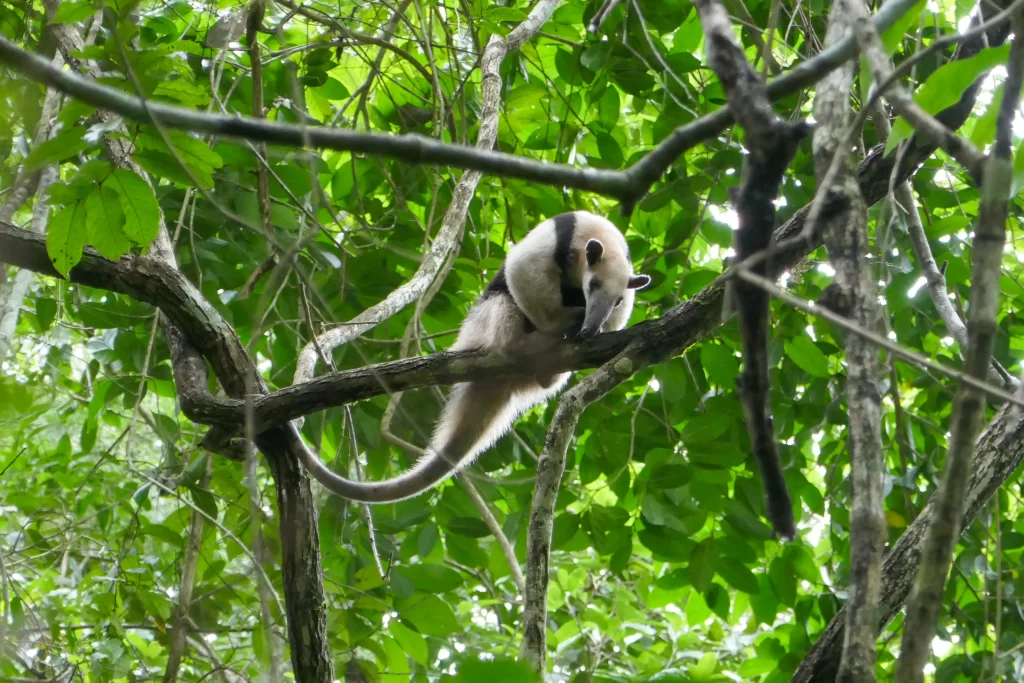
Additionally, Mayflower Bocawina National Park is just 30 minutes in the other direction. The park teems with wildlife, and hosts everything from early morning bird watching to night hikes, to help you spot the full spectrum of residents. The park is also home to Mayan ruins, waterfalls, and ziplining adventures.
On the aquatic side, technicolor coral reefs sprawl just offshore, and make for an easy snorkeling excursion.
If you have your scuba certification, a trip to the Gladden Spit Marine Sanctuary (30 miles out from Placencia) is worth the effort. Gladden Spit is known for its extensive marine life, while whale sharks pass through between the months of March – June.
